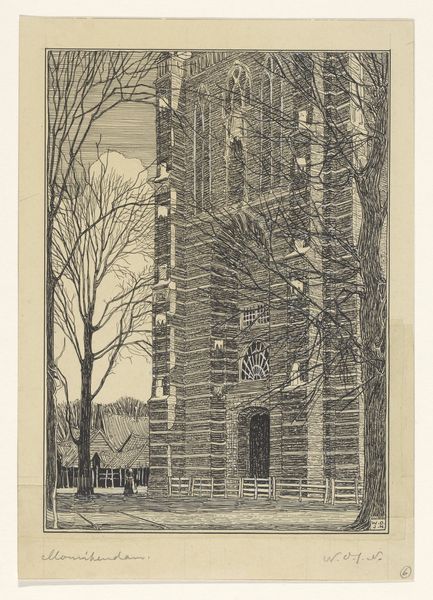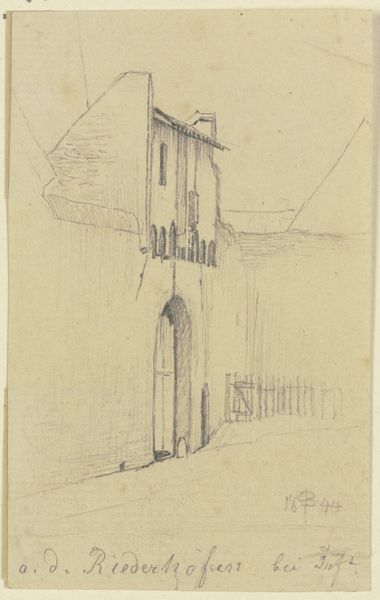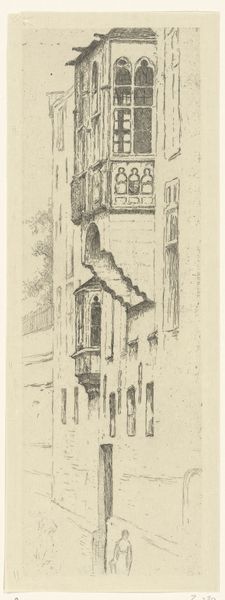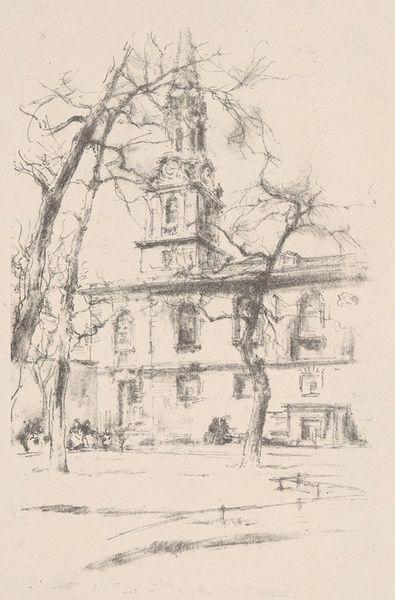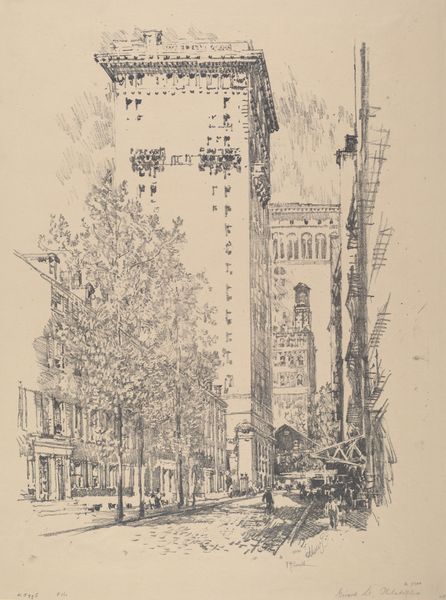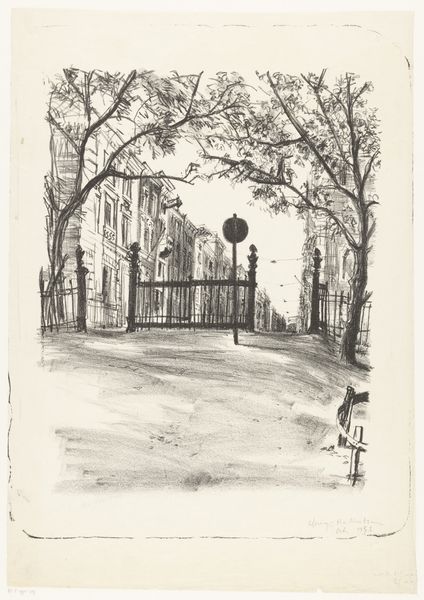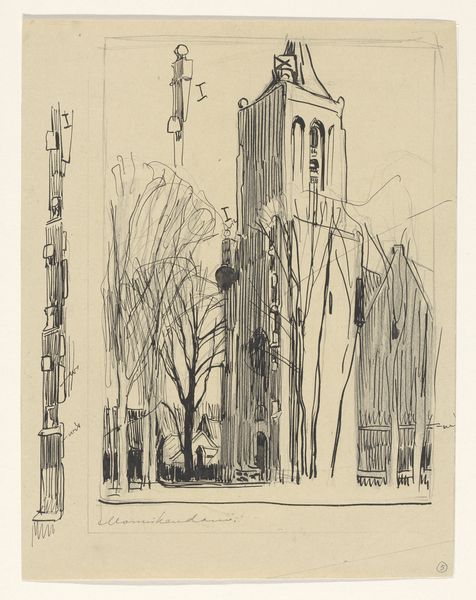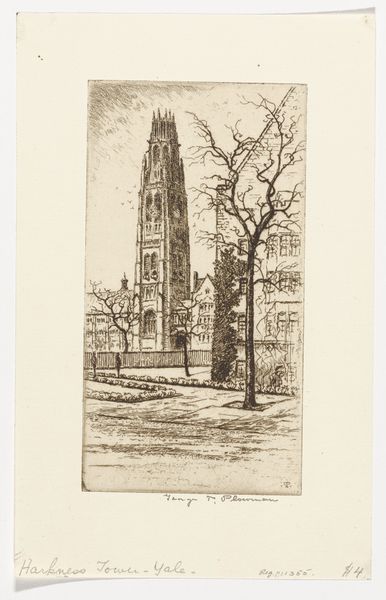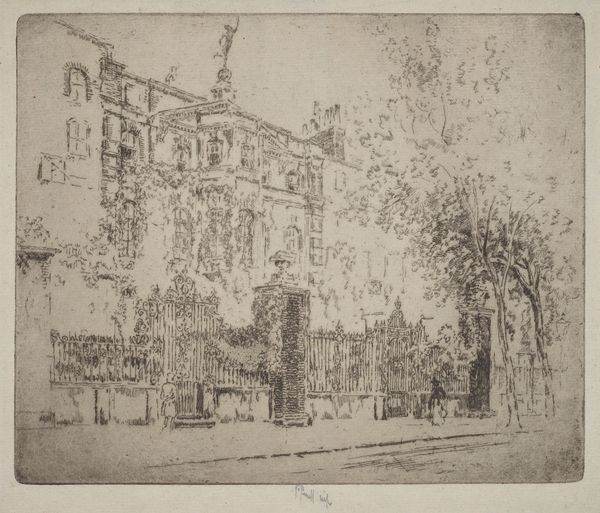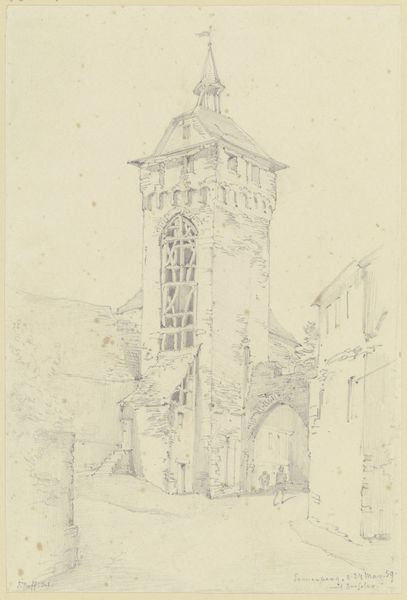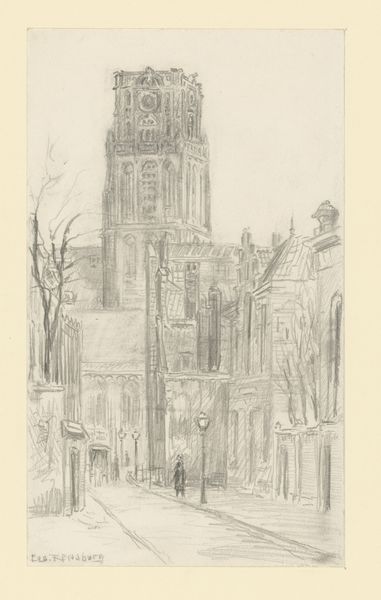
Dimensions: 310 × 235 mm (image); 375 × 270 mm (sheet)
Copyright: Public Domain
Editor: Here we have Theodore Roussel’s "Winter, A House in Green Park," created between 1890 and 1894 using lithography, etching, and other drawing media on paper. I’m immediately struck by how stark and somewhat bleak it feels, like the bare bones of the city are showing through. What aspects of its historical or social context should we consider when viewing this work? Curator: That bleakness is telling. Consider late 19th-century London. Rapid industrialization led to both unprecedented wealth and extreme poverty, often side by side. Roussel, as an Impressionist, was interested in capturing fleeting moments, but he also lived in a time of immense social upheaval. Editor: So, do you think the subject matter, this imposing house, is a deliberate commentary? Curator: Possibly. The Green Park area was, and still is, quite affluent. Is Roussel subtly highlighting the division between the haves and have-nots by depicting a grand house in the grip of a seemingly desolate winter? What purpose does the inclusion of the bare tree serve, positioned in front of the house, blocking our access? Editor: It definitely adds to that feeling of separation, almost like a barrier. The branches seem to mimic the rigid structure of the building, trapping the house behind a veil. So the "Winter" of the title is less about the season and more about a kind of societal chill? Curator: That's a fascinating way to look at it. Perhaps Roussel isn’t just capturing a season, but reflecting on a specific social climate, using the cityscape as a canvas for commentary. The lack of color, the stark lines – all reinforce a sense of austerity. Consider the politics of imagery in that era. Who was represented and how? Whose stories were told, and whose were ignored? Editor: I never thought of a landscape having that much social weight! It’s fascinating to consider how an image, so seemingly simple, can carry so much historical and social information. Curator: Precisely! Art is always in conversation with its time. It’s our job to listen closely.
Comments
No comments
Be the first to comment and join the conversation on the ultimate creative platform.
